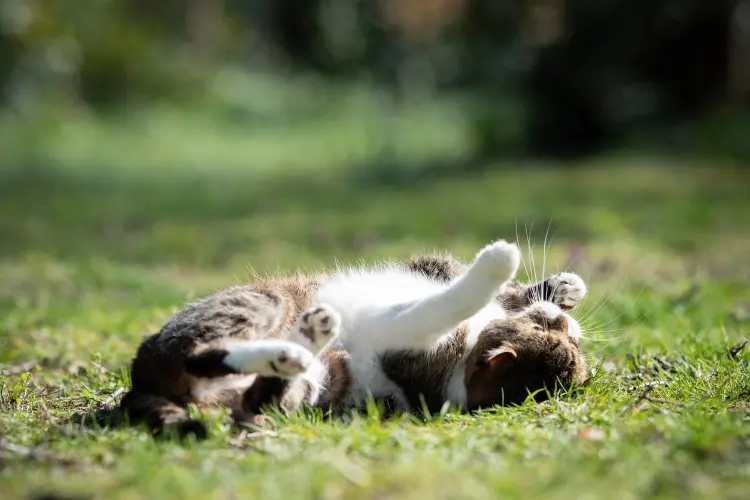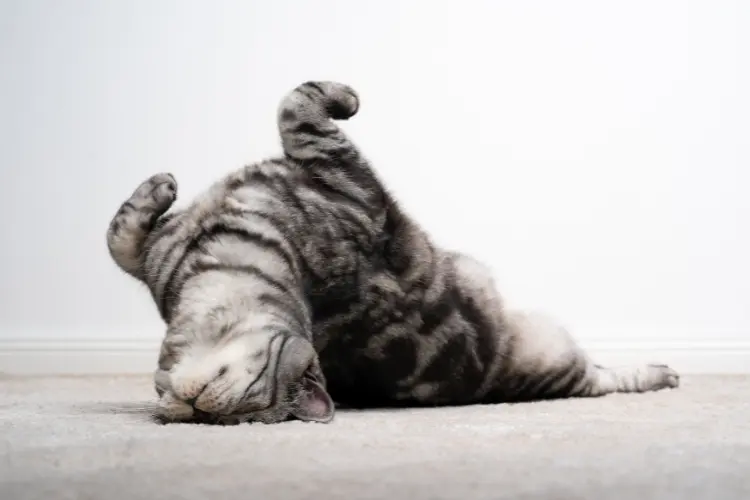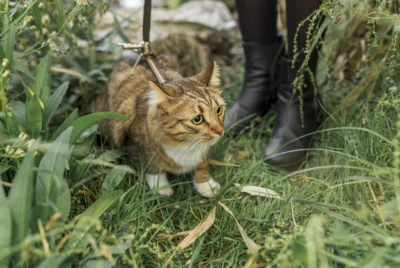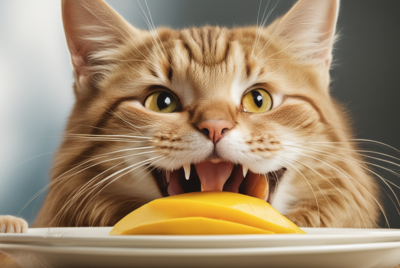Cat Rolling 101: Why Does My Cat Roll Around on the Floor?
Have you ever watched your cat roll around on the floor and wondered why they do that? This fascinating feline behavior has intrigued cat owners for ages, leaving many puzzled about its reasons. So, in this blog post, we’ll unravel why your cat rolls around on the floor and delve into the various factors that influence this captivating behavior.
Rolling for Attention
Cats have a way of capturing our attention, and rolling is no exception. One of the primary reasons cats roll around on the floor is to grab their owner’s attention and engage in social interactions. With their expressive body language, cats send a message that they’re open to being petted, or perhaps they’re seeking a playmate.
However, contrary to popular belief, rolling on the floor doesn’t necessarily indicate a desire for a belly rub. In fact, cats often prefer a gentle scratch behind their ears instead.
You should closely observe your cat’s body language and be cautious when interacting with them, particularly if they are new to you.
Cooling Down and Comfort
On hot days, your cat may seek relief from the heat by rolling on the floor. This behavior helps them regulate their body temperature and stay cool. Rolling exposes different parts of their body to the air, allowing for better heat dissipation and air circulation.
Your cat may instinctively choose cool surfaces such as concrete or tiled floors to maximize their cooling effect. This clever strategy allows them to beat the heat and find comfort even on the warmest of days.

Playful Behavior and Exercise
Cats, especially domestic cats, are natural-born hunters and playful creatures. Understanding cat behavior can help explain why cat rolling on the floor, sometimes referred to as a “cat roll,” can be an invitation to play, a way to stretch their muscles after a nap, or a signal of their contentment.
Observing many cats rolling at cat shows can also provide insights into these fascinating feline behaviors. Additionally, maintaining a clean litter box can contribute to a cat’s overall happiness and well-being, as well as the well-being of other cats in the household.
We’ll further examine two main aspects of this behavior: promoting interaction and muscle stretching.
Inviting Interaction
When a cat rolls on the floor, it’s often a sign of trust and friendliness, as well as an invitation for interaction. This behavior can be seen as a playful gesture or a way for the cat to mark its environment with its scent. Exposing their bellies indicates that cats feel safe and comfortable in your presence.
So, how should you respond to this invitation? Start by offering a finger for your cat to sniff, and then observe their reaction. If they seem comfortable, continue with gentle petting or other forms of attention for a few seconds. Bear in mind, observing your cat’s body language and cues is key for a positive interaction.
Stretching Muscles
Muscle stretching is vital for cats to keep up their agility, strength, and overall well-being. Regular stretching helps cats:
- Stay flexible
- Increase blood circulation
- Reestablish alignment of their spine and muscles
- Maintain a healthy posture
Cats instinctively stretch their back muscles, leg muscles, and spine when playing or resting. This practice helps stimulate muscle contraction and preserve their natural flexibility and range of motion, improving their reflexes and accuracy in movements. Additionally, stretching keeps their leg muscles strong, enabling them to jump and land gracefully.

Marking Territory with Scent
Cats are territorial animals, and rolling on the floor can be a way for them to spread their scent and mark their territory. This behavior allows them to assert dominance over their environment and serves as a deterrent to potential rivals.
Cats use their scent glands located on their cheeks, paws, and flanks to mark their territory. By rubbing their entire body on the ground and other surfaces, they effectively spread their scent and communicate their presence to other animals.
Itchy Back Relief
Rolling on the floor can also provide relief for cats with itchy backs due to skin dryness or parasites. This behavior allows them to scratch those hard-to-reach spots and alleviate the discomfort.
If you suspect your cat is experiencing an itchy back, you can take the following steps to provide relief:
- Monitor their behavior and look for signs of itching or discomfort.
- Brush their fur regularly to remove any irritants or allergens.
- Use a flea comb to check for fleas or other parasites.
- Employ a topical flea treatment to prevent or eliminate fleas.
- Consult with your veterinarian for further guidance if the itching persists or worsens.

Catnip Influence
The influence of catnip can also cause cats to roll around on the floor. Catnip is a plant that contains nepetalactone, a chemical known to produce euphoria in cats. Under the influence of this plant, cats may exhibit ecstatic behavior, such as face-rubbing and body-rolling their toy.
The chemical nepetalactone in catnip stimulates a cat’s sexual behavior, which may lead to an increase in rolling behavior. This fascinating phenomenon can provide a unique insight into the world of feline play and attraction.
Mating Signals and Pheromones
Female cats in heat may exhibit increased rolling behavior as a way to release pheromones and attract potential mates, such as male cats. Rolling around on their backs outside can help broadcast their pheromones to males in the vicinity, making it easier for a female cat to find a partner.
Pheromones are chemical signals released from tiny glands located on various parts of the cat’s body, such as the head, back, and tail. These signals play a crucial role in feline communication and attraction during mating season.

Trust and Bonding
Rolling on the floor can also be a sign of trust and bonding between a cat and its owner. By exposing their vulnerable belly, cats communicate that they feel safe and comfortable in your presence. It’s a heartwarming display of affection that strengthens the bond between pet and owner.
Understanding your cat’s behavior, such as their rolling behavior, can provide valuable insights into their emotions and well-being. Keeping an eye on their cat’s body language and identifying situations where they might need your attention or help is important.
Identifying Potential Health Concerns
Though rolling is a natural and charming behavior for cats, you should be mindful of potential health issues that could be signaled by alterations in their rolling habits. We will delve into two potential health-related concerns: allergies and skin conditions, and neurological problems.
Allergies and Skin Conditions
In some cases, rolling behavior may be a sign of allergies or skin conditions. Cats may experience itchiness due to parasites, infections, or allergies, which can cause them to roll around in an attempt to find relief.
To identify potential warning signs, observe your cat’s rolling habits and seek advice from your veterinarian if you detect any worrisome changes. Regular grooming and flea treatments can help prevent and alleviate skin issues in cats.
Neurological Issues
Rolling behavior can also be indicative of neurological issues in cats. Conditions such as nerve damage and pruritus can cause pain, confusion, and sensations of pins and needles or electric shocks. These issues may affect your cat’s rolling behavior and overall well-being.
If you suspect your cat is experiencing neurological problems, consult with your veterinarian to confirm the diagnosis and discuss appropriate treatment options. Early detection and intervention can make a significant difference in your cat’s quality of life.
Read also: When To Euthanize A Cat With Seizures? A Guide for Pet Owners
Frequently Asked Questions
Why do cats roll on the floor when they see you?
Cats roll on the floor when they see you because it is a sign of relaxation, playfulness, and affinity, indicating that your cat feels safe and may want some attention from you. Rolling is also commonly accompanied by purring, rubbing its head against the floor, and meowing.
Is it normal for cats to roll around on the floor?
Rolling around on the floor is a natural and normal behavior for cats, used to express themselves through body language. Cats roll when they are feeling playful, itchy or in need of a good stretch, often accompanied by purring, rubbing their head against the floor, and meowing.
Why does my female cat keep meowing and rolling on the floor?
Your female cat is likely in heat, and the meowing and rolling on the floor are signs of her increased affectionate behavior. She’ll keep coming into heat until she is spayed.
Can rolling behavior indicate health concerns in cats?
Yes, rolling behavior can be a sign of health issues in cats, such as allergies, skin conditions, or neurological issues.
How does catnip influence cats to roll?
Catnip contains a chemical called nepetalactone, which induces euphoric and playful behavior in cats, causing them to roll around in response.
Wrapping it Up
Understanding the reasons behind your cat’s rolling behavior can help you better connect with your feline friend and ensure their well-being.
By paying attention to your cat’s body language and being mindful of potential health concerns, you’ll be equipped to provide the love, care, and support your furry companion needs.
So the next time your cat rolls around on the floor, you’ll be able to appreciate the complex world of feline behavior and strengthen the bond between you and your cat.




